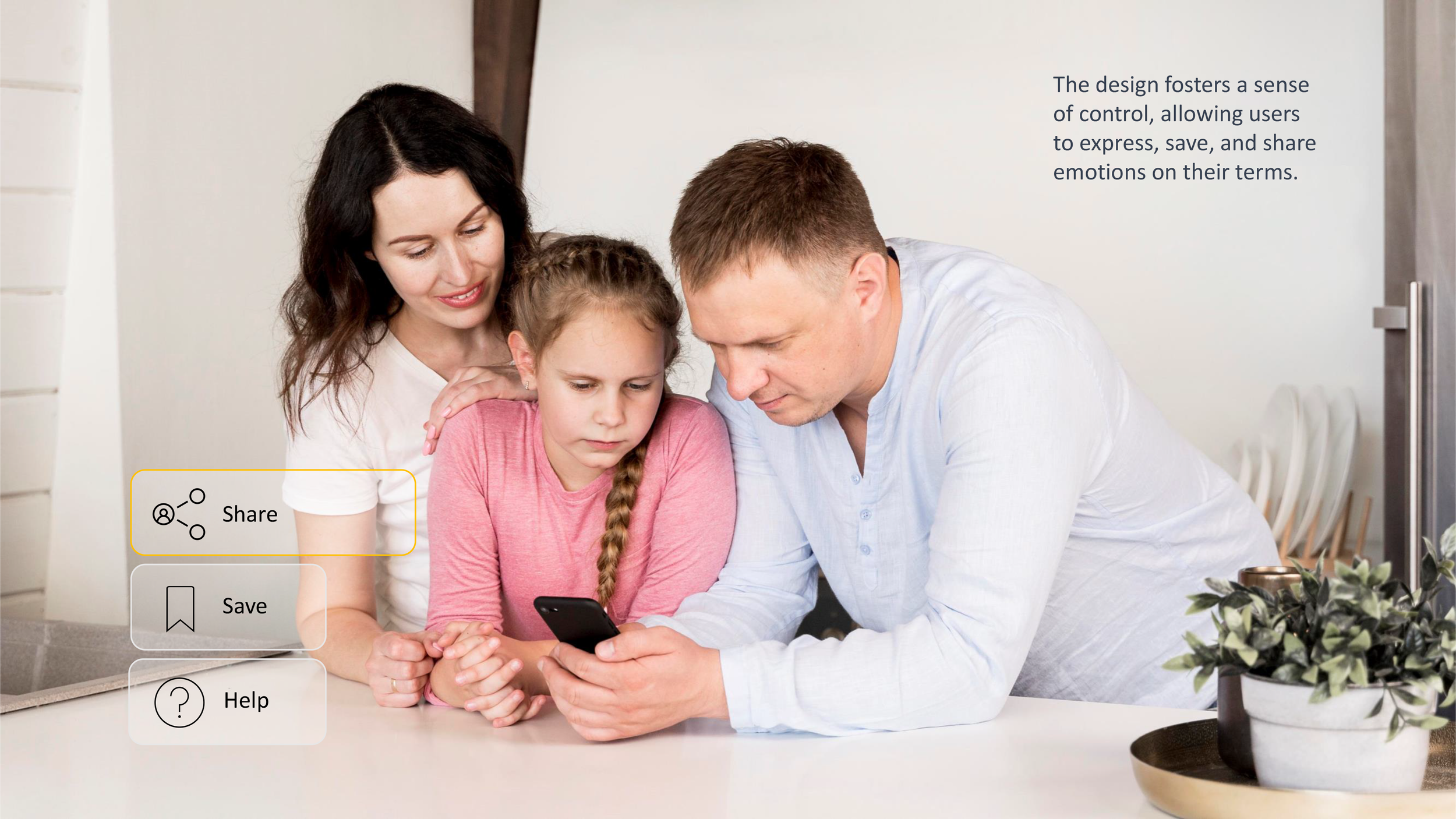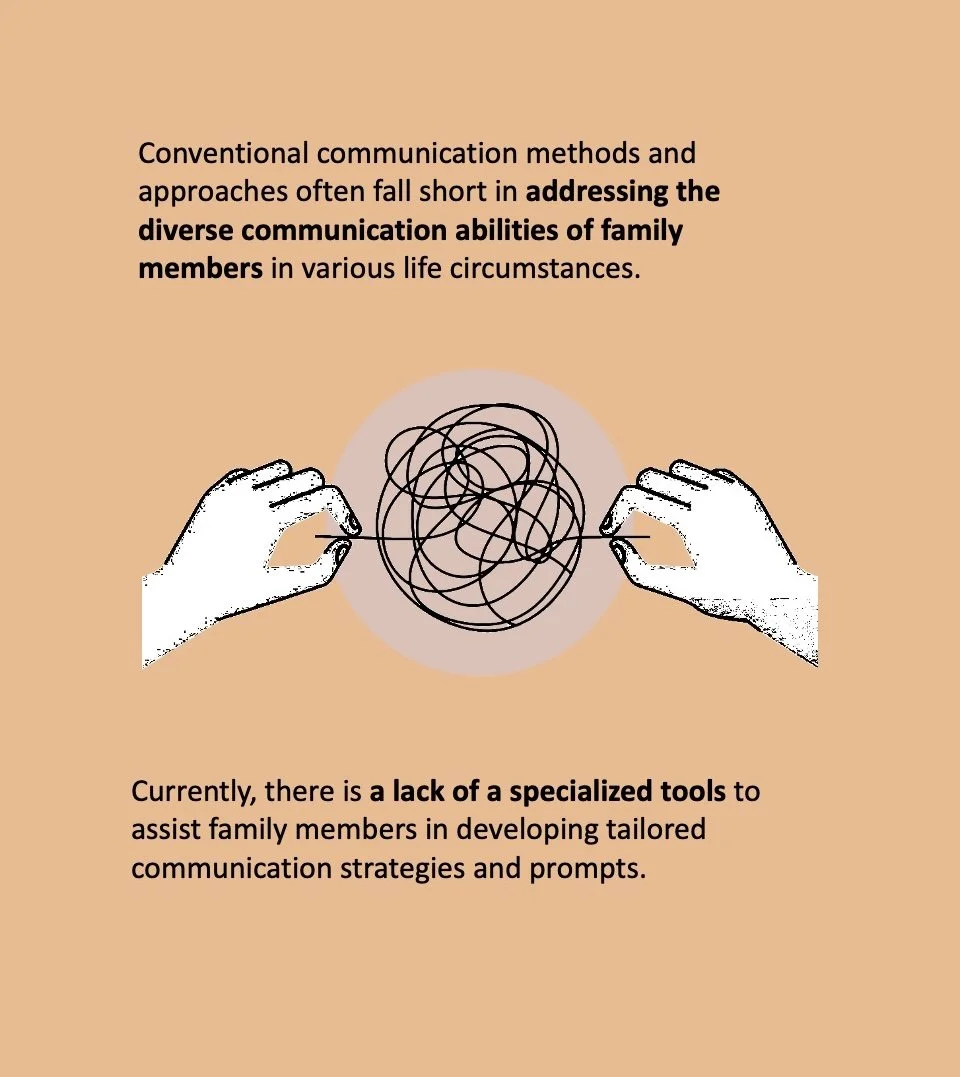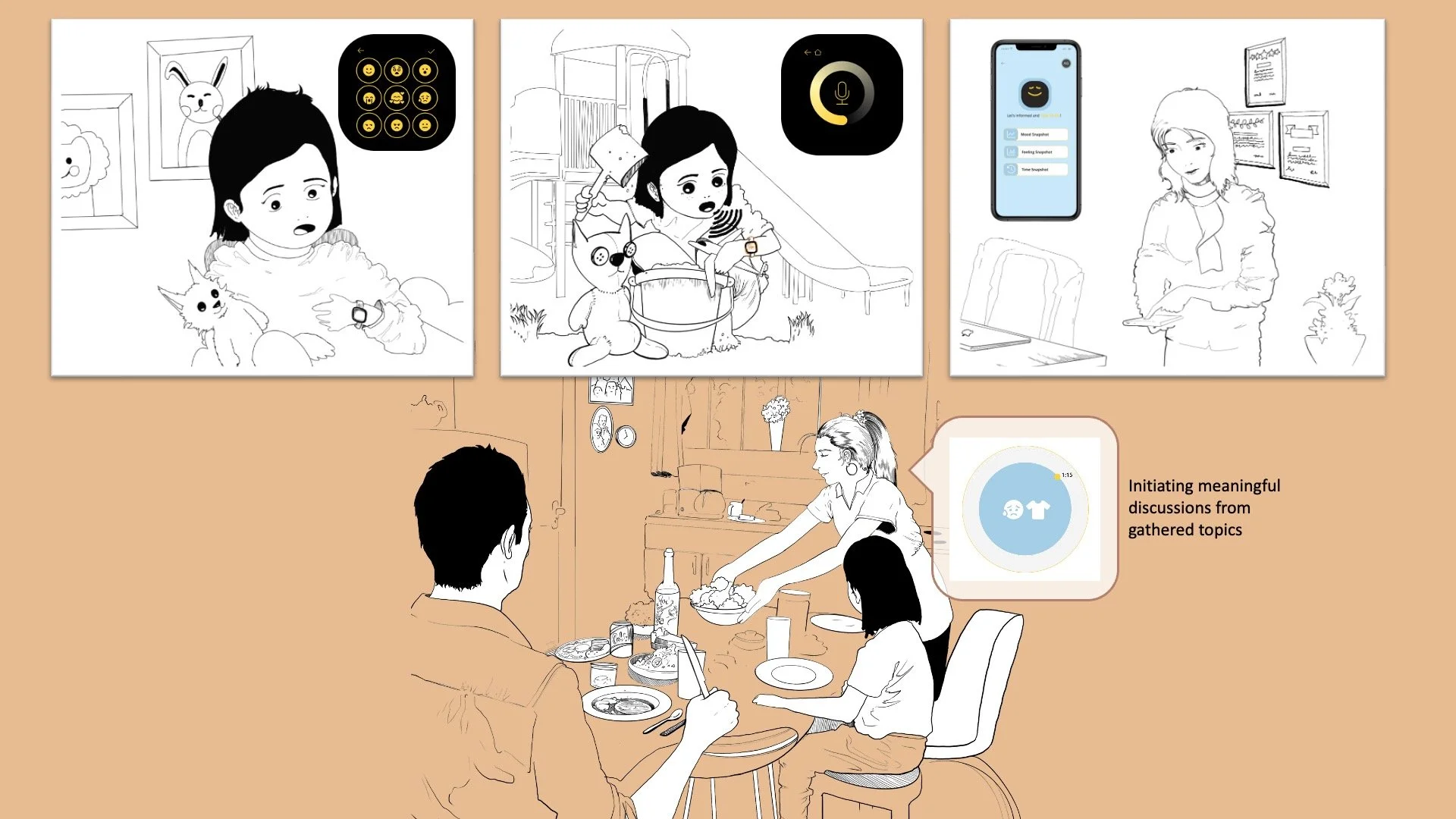Talk To Me
(Patent - Pending)
Talk To Me is a wearable device that allows a child to log feelings, emotions, and events and provides parents with entry points into family conversations that center on their children's daily experiences.
From the beginning of the research process, I have been asking myself how might we use design to facilitate meaningful communication between parents and children.
Research
Each family is a unique mini-culture
Mini-cultures develop their own codes to communicate based on the established norms, beliefs, and values within the family unit. All families need to communicate and talk openly, and parents mostly shape the communication pattern as the first member of the families. Children often learn communication patterns from their parents.
What if parents are not capable enough to shape healthy communication and improve family dynamics?
In the context of family dynamics, this data prompts us to consider the profound impact these challenges may have on familial relationships, creating a pressing need for interventions that can facilitate open communication, strengthen emotional bonds, and nurture healthier connections within families.
Conversation and conformity orientation
Globally, families can be categorized into four distinct types (Pluralistic, Consensual, Protective, Laissez-faire). Two of these types, the Laissez-faire Family and the Protective Family, are characterized by low levels of communication, and their interactions involve limited topics. These families often adhere inconsistently to or lack family rules, they face challenges discussing emotions and daily occurrences openly, and they often struggle to converse given their lack of shared experience.
So, conventional communication methods and approaches often fall short in addressing the diverse communication abilities of family members, particularly in various life circumstances. Therefore, intervention to help family members develop appropriate communication strategies and cues is necessary.
Essentiality of Communication in Human Experience
As a designer passionate about user experience design, I strongly believe in prioritizing the human experience above all else. My project aims to address the critical importance of communication for children and its profound impact on their future well-being. By leveraging the potential of technology as a tool in today's digital era, I strive to connect family members and foster meaningful communication despite the perception of digital tools as a source of separation in human life.
My mission as a designer is to tackle real-world problems that enhance human lives, especially those of children. By fostering meaningful communication between family members, I seek to bridge the gap between the digital and physical worlds, offering innovative solutions that enrich children's experiences through expressing their feelings and empowering parents to be proactive in anticipating upcoming conversations at home, and initiating and sustaining meaningful dialogues with their children.
User Journey
Put me in some family shoes!
A child's daily user journey starts with going to school and ends with returning home, hoping to talk to their parents— different scenarios indicate that if the conversation goes well, they feel connected and supported; if not, they may feel unheard and withdrawn.
Create user personas based on the information gathered!
What if we could empower kids to stay connected with their parents while respecting their preferences?
Ideation & Development
User Test
In order to create an optimal user experience, I conducted usability testing and detailed interviews with children, parents, caregivers, and child psychologists to precisely shape our design criteria and features. By actively engaging with our target groups, we eliminated redundant features and incorporated meaningful and direct elements.






















